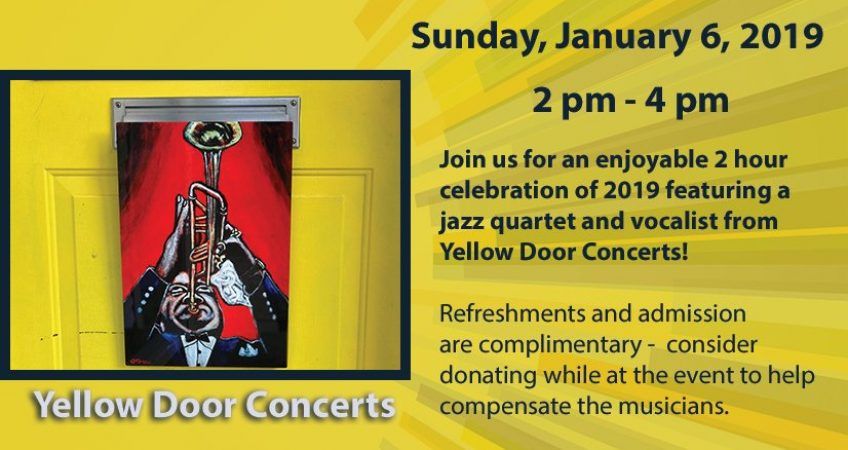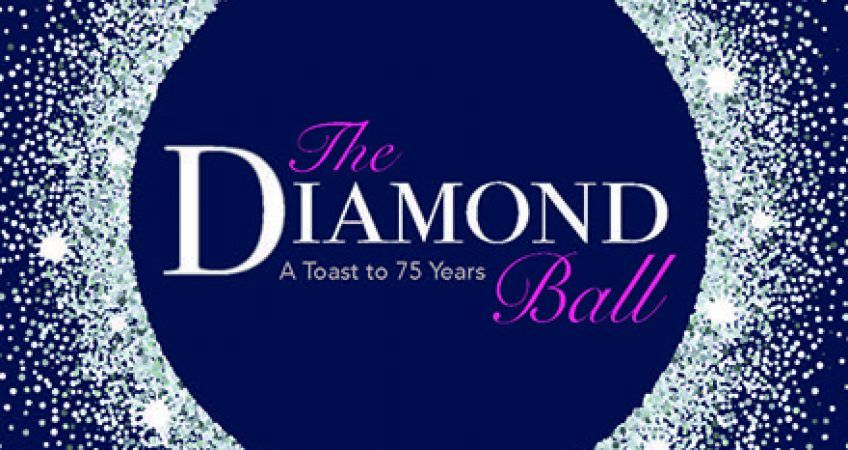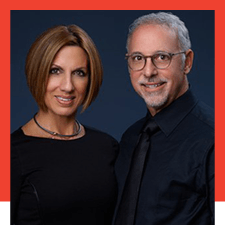IRA LUDWICK SALON BLOG
Discover new articles and posts from our talented team on all things hair, the latest trends, beauty treatments, skincare and more.
BOOK NOW

WE’RE A REFLECTION OF THE COMPANY WE KEEP – KEVIN MURPHY OWP INITIATIVE ANNOUNCED! Proud of Our Supplier, Kevin Murphy We recently received an email with some documentation from one of our favorite hair care brands, Kevin Murphy. Let me tell you – we were blown away by their commitment to reducing the amount of plastics going into our oceans – and their plans to recover 360 tons per year in their new Ocean Waste Plastic bottling initiative! Watch their short, informative video below.

JAZZ PERFORMANCE AT IRA LUDWICK SALON You’re Invited to a Jazz Quartet Performance at the Salon Start 2019 off on an eventful beat by attending our Special Event – Live Acoustic Jazz in the Salon on Sunday, January 6, 2019 from 2 p.m. to 4 p.m. We’re featuring a jazz quartet and vocalist from Yellow Door Concerts – and attendance is free! We’ll be serving complimentary refreshments. Please consider a donation to the performers to help compensate them for the entertainment. RSVP to ira@iraludwicksalon.com – limited to 100 attendees. We look forward to seeing you on January 6, 2019!

CELEBRATING SUBURBAN HOSPITAL’S 75TH ANNIVERSARY Suburban Hospital Diamond Ball Suburban Hospital’s Diamond Ball was an amazing event to celebrate the hospital’s 75th anniversary and raise funds for the expansion of the campus to create a new, world class medical facility here in Bethesda. The evening brought in more than $1 million. We’re so proud of Katie, who serves as the Chair of the Suburban Hospital Foundation’s Board of Trustees. Both Katie and our salon were a prominent part of the effort!

THE INTERCOIFFURE DIFFERENCE Hairdressing – A Noble Profession In 1976, I was 19 years old and working for Michael Piano, a Georgetown salon owner who was a student and devotee of Vidal Sassoon. We were at the Plaza Hotel in New York City, attending Atelier, the preeminent hairstyling conference, and my role was to assist Michael onstage as he demonstrated his innovative techniques to straighten and highlight hair. As I studied our audience, a roomful of elegantly dressed ladies and gentlemen who watched and listened carefully to Michael’s presentation, I had an epiphany, a true ‘wow’ moment: At its best, hairdressing is a noble profession. Finding My Calling In that moment, on that stage, I found my calling and my community— Intercoiffure , the conference’s sponsor and an international organization comprised of the top one percent of salons around the world. I returned to Washington committed to Intercoiffure’s extraordinary focus on both artistic and business innovation. When I opened my own salon in 1984, I worked hard to gain admission to this elite group of leaders in the hair and fashion industry. Intercoiffure Philosophy Intercoiffure’s philosophy is built on the concept of elevating our industry through fellowship. The association celebrates and promotes the principles of fraternity, friendship, fashion and finance. At its core, Intercoiffure facilitates the open sharing of technical, stylistic and business knowledge and experience. Continuous education, mentorship and opportunities that advance genuine creativity in fashion and personal care are key to Intercoiffure’s success and its stellar reputation as the standard bearer of the hairdressing industry. How Intercoiffure Impacts My Clients’ Experience I am constantly impressed with our members’ passion for both the artistic and business aspects of style. The association partners with top designers to think about where fashion is going. Members share their creative concepts, think about how trends are created, and learn how to anticipate what is going to be in demand six months from now. Members also anticipate changes in the business landscape—assessing and developing solutions to the impact of e-retail on a salon’s financial viability, for example, and fostering innovative programs that highlight the importance of the client experience. All members, and stylists everywhere, benefit from these collaborations. What does my membership in Intercoiffure mean to you as my client? First, I am in continuous contact with the best minds in the style and fashion industry, so you can rest assured that my salon is at the leading edge of style trends and practices. Second, my salon’s adherence to Intercoiffure’s high standards of professionalism and creativity means that our stylists are celebrated and supported through continuing education, training and mentorship. Crucially, our team values working together in pursuit of excellence in our craft and a warm, welcoming experience for everyone who walks through our door. I still have those ‘wow’ moments when I attend Intercoiffure’s semi-annual conferences. It’s an honor to have a place at the table and an opportunity to advance the creativity, fellowship and business acumen of our profession’s best.

AN EASIER PATH TO LUXURIANT EYELASHES—REVITALASH® We all celebrate long, thick, noticeable eyelashes. They are a beauty basic and we turn to mascara, dyes, extensions and false lashes to augment nature’s initial endowment. The quest for great lashes is a given, but it can also be an unending slog. We think there’s another option for women who want luxuriant, compelling eyelashes but don’t want to commit so much time and effort to the cause: RevitaLash, an eyelash conditioner that strengthens, lengthens and darkens eyelashes with minimal effort and at a reasonable cost. The Feel Good Story Behind RevitaLash There’s a good story behind this product. RevitaLash was originally formulated by Dr. Michael Brinkenhoff for his wife, Gayle, who was disheartened by her thinning eyelashes, a side effect of her chemotherapy treatment for breast cancer. More than a decade later, her experience still resonates— the Brinkenhoffs donate a percentage of the proceeds from RevitaLash sales to fund breast cancer research and education. How RevitaLash Strengthens Eyelashes So how does it work? RevitaLash combines just a few key ingredients to strengthen lashes, including panthenol, a derivative of the B5 vitamin that enhances the appearance of hair by promoting growth, repairing damage and improving sheen. Two other ingredients, chlorphenesin and a lipid compound, are both associated with increased hair growth. Application is quick and uncomplicated: Once each day, you apply a thin line of the conditioner to the base of your eyelids, where the lashes emerge, taking care not to avoid contact with the eye itself. That’s it! How to Get Started with RevitaLash In about four weeks (the normal growth phase of your hair follicle), you will see longer, thicker, more resilient and, in many cases, darker lashes. By the time you need a second applicator, you may be able to forego mascara altogether. Luxuriant natural lashes are a compelling beauty asset, augmenting your personal style and promoting self-confidence. We suggest you give RevitaLash a try. You will be impressed by the results, which are, well, eye-catching!

HOW TO TALK TO YOUR HAIRSTYLIST (REALLY) DID YOU ASK to look like Ziggy Stardust ? No. You just said, “Maybe some layers…” and the hair stylist took it from there. You think: Were we even speaking the same language?! Again: no. Hairdressers work with an arcane lexicon of words like “direction” and “movement” and “weight”—oh, they sound like words you know, but they have a whole different meaning to someone wielding scissors for a living. The obvious solution: a Rosetta Stone of salon-speak so that you’ll know the precise beauty parlor parlance— confidently tossing around terms like feathering, razoring, A-line bob—to help a hairdresser turn the vision in your head into a vision on your head. I embarked on a one-hour crash course in Stylist as a Second Language, courtesy of Ira Ludwick, owner of the eponymous salon on Old Georgetown Road in Bethesda. A gracious, articulate man clearly in love with his profession, Ludwick was eager to pass along insider knowledge. He patiently walked me through technical jargon, basics of cuts, techniques and tools, so that I can now give you my best advice about communicating with stylists on their own terms: Don’t. Don’t even try. No fault of Ludwick’s; he gave it a good go. Layering, for instance: To me it simply implies that some of the hair is shorter than the rest; to a pro, Ludwick explained, layering means hair is elevated from the part 90 degrees or more before cutting; elevated less than 90 degrees, it’s graduated—okay, got it. But then: “So you create graduation by tension, overdirection and elevation. Graduating hair, you’re stacking to control weight release—horizontal graduation is the strongest form—but if you increase elevation to make it shorter to the successive section, you’re layering, releasing more weight from the shape.” [blink, blink] There’s even possible confusion over the phrase “all one length.” What? Yes: one length, if you measured distance from the cut ends to the floor, versus one length, as in all hairs would be equal length measured from the scalp (bonus points if you remember the Flowbee). It eventually became clear to me that a customer in a salon is in a foreign country. If you happen to be fluent in their language, fine. But trying to make your way based on a superficial grasp of a few phrases, you’re liable to wind up panicked, in tears and eating kidneys (excusez-moi, rognons sounded delicious)—whatever the haircut version of that is. Lucky for you, though, you’ve been provided a translator: your stylist. While Ludwick was game about giving me a glossary of salon shop talk, “I never expect clients to speak ‘hair-speak,’ ” he assures. “It’s the professional’s responsibility to find some common language.” Phew. To get the best possible haircut, then, your job is merely to provide all the plain-talk, uneducated info you can. Priority one, sensibly enough for a language barrier, is pictures. Lots of them. Photos of styles you like, styles you like one aspect of, styles that haven’t worked for you; photos of you when you’ve loved your hair, when you’ve hated it. Then go over every one with the hairdresser. “It’s easier for people to say what they don’t want,” Ludwick observes. “ ‘That’s too short, but this is too long, this part’s too heavy. I don’t like the bangs here, but the length is good; I like how it falls around her face, but not this wispy.’ ” Impart wisdom from your own experience—the under-layers refuse to wave, a hint of humidity means instant frizz. Silly as it sounds, you might even bring a written list of idiosyncrasies and preferences, years’ worth of lessons learned the hard way, so you don’t forget to say, “It has to stay off my face,” or “Shorter than this, here, and it poufs like a mushroom.” Meanwhile the stylist should, in turn, be taking stock of your face, head shape, hair and lifestyle, scoping out your tolerance for upkeep, products and futzing, so she can, for instance, gently caution that without massive gel/pomade/mousse deployment (not to mention bee-stung mouth), you might think twice about going all Miley Cyrus . Once she’s processed everything you’ve shown and told her, incorporated her understanding of you and your hair, and laid out her plan for the cut, take another minute to echo back to her what you heard, make sure you’re in sync, Ludwick suggests. If all works as it should and you wind up with the perfect cut, ask the stylist to make notes about what he did, and hand him your phone to take pictures from all sides. That way when you go back two months later saying, “Please just do the same thing”— a phrase that terrifies hairdressers, Ludwick reports—he’ll have guidelines that tell him a lot more than another inch of unevenly grown-out hair does. That all sounds great, but really—multiple pictures, lengthy lists of dos and don’ts, active listening? As someone loath to seem pushy, fussy or vain, I doubted I’d have the nerve to demand so much talk time. “Just like with medicine,” Ludwick counters, “you have to be your own advocate; just like any relationship, you have to make sure that you and the other person understand each other. If a stylist seems annoyed by how much time you need to consult, find another stylist. You’re the boss!” So, having found a great Living Social deal for Ludwick’s salon, I gave his approach a test run. I brought along six pictures of celebrity styles, an old candid of me on a good hair day and a cheat sheet of wants and musts, past mistakes and misunderstandings. I thought I’d feel like an idiot trotting all this out, but Ludwick’s cheerleading had been curiously empowering (I am somebody! I am somebody! Somebody who deserves a good haircut!). Instead of my usual vague, glancing, apologetic specs (“um, a couple inches off, long layers, a few bangs?”) I spent at least 10 times longer dissecting the photos and pointing out my hair’s peculiarities to my assigned stylist, Nicole (who informed me that the salon automatically schedules 15 minutes of get-to-know-you time for new clients). Then I happily placed my head and faith in her capable hands and relaxed. I walked out a while later with a really good haircut that was exactly what I had wanted. And never once tried to bluff my way through “deconstructed concave cut” or “diagonal forward graduation.” –Catherine Clifford











